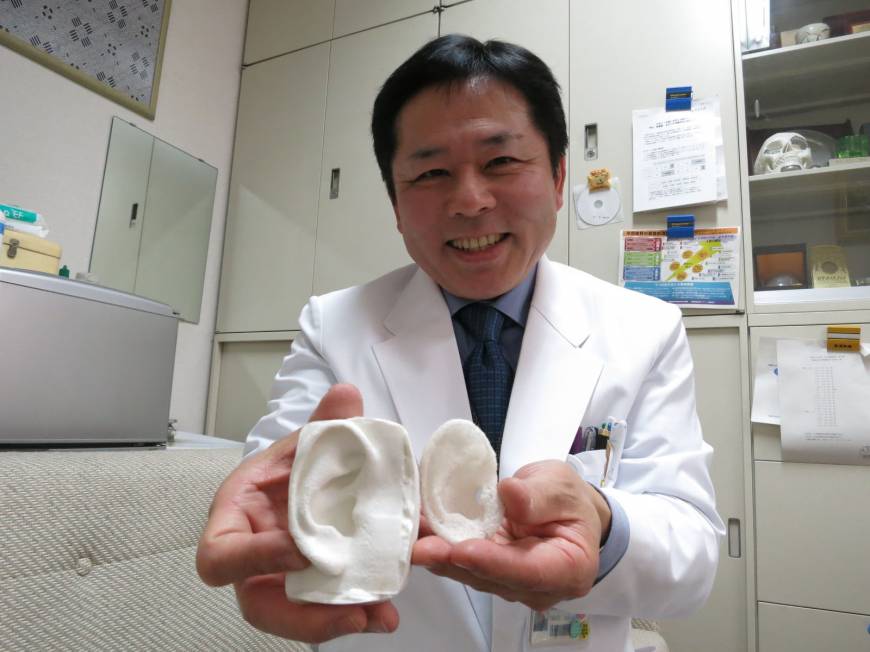Japan, the leading country in technological advancement and research in Asia, is starting to observe a rapid development in its 3D printing industry as the demand for 3D printing technology is substantially increasing.
Companies and experts in the manufacturing and health care industries have particularly demonstrated strong interests in 3D printing technology, experimenting with various 3D printers, 3D printing techniques and alternative layered manufacturing mechanisms.
 In July, the International Data Corporation (IDC) Japan announced that the total sales of the domestic 3D printing market in 2015 reached ¥34.4 billion or $310 million, which showed a 104.4% annual growth compared to the previous year.
In July, the International Data Corporation (IDC) Japan announced that the total sales of the domestic 3D printing market in 2015 reached ¥34.4 billion or $310 million, which showed a 104.4% annual growth compared to the previous year.
The report from the IDC also explicitly analyzed different areas of the Japanese 3D printing industry and suggested their projected growth by 2020. The following areas include:
- Services market: projected to grow to ¥20.2 billion by 2020
- Material market presumed to be worth ¥29.97 billion by 2020
- Professional 3D printers market to be worth ¥23.2 billion by 2020
The healthcare and automotive industries have been heavily involved in both the material and professional 3D printer markets, with surgeons and healthcare experts focusing on experimenting with various 3D printing materials for implants and automotive manufacturers utilizing 3D printers to produce parts with cost and time efficiency.
In early 2015, the New Energy and Industrial Technology Development Organization (NEDO), a Kanagawa-based semi-public body, announced a ¥2.5 billion fund to spur the growth of highly advanced 3D printing mechanisms for human tissue regeneration.

Tsuyoshi Takato, a professor of tissue engineering at the University of Tokyo’s School of Medicine [Image: Kazuaki Nagata, Japan Times]
With the Japanese government estimating that the regenerative medicine industry is presumed to grow to ¥1 trillion by 2030, Sakamoto and NEDO believe that emerging and innovative technologies like 3D printing will lead the market.
“Using Japan’s advanced technology to create 3-D tissues with cells, we aim to (put) innovative products for regenerative medicine . . . into practical use ahead of other countries. This will strengthen our international competitiveness,” said NEDO.
Tsuyoshi Takato, a professor of tissue engineering at the University of Tokyo’s School of Medicine, also noted that 3D printing technology will remain a vital element for the growth of the regenerative medicine industry, as 3D printers are capable of creating complex human tissue with reduced costs and time. Takato and his team have developed a bioprinter and are working to create custom 3D printed bone and tissue for implantation in humans.
Earlier this year, 3DPrint.com also reported that the Japanese heavy industrial technology manufacturer Matsuura Machinery joined the UK-based Manufacturing Technology Centre (MTC), adding its large-scale industrial Lumex Avance-25 3D printing and CNC hybrid systems to the development and demonstration center. Japanese 3D printing companies have started to distribute and introduce their 3D printers internationally, with hopes of finding regions with high demand for professional 3D printers.
As large yet unconventional industries in Japan begin to target 3D printing technology, the demand for 3D printers will surge over the next few years. Specifically, professional and large-scale 3D printers will continue to be distributed across the nation and the 3D printer market will grow rapidly. Discuss in the Japanese 3D Printing forum at 3DPB.com.
[Sources: IDC, Japan Times]Subscribe to Our Email Newsletter
Stay up-to-date on all the latest news from the 3D printing industry and receive information and offers from third party vendors.
Print Services
Upload your 3D Models and get them printed quickly and efficiently.
You May Also Like
Honeywell Qualifies 6K Additive’s Nickel 718 for 3D Printed Aerospace & Defense Parts
6K Additive is renowned for manufacturing sustainable additive manufacturing (AM) powder, and offers a wide portfolio of premium metal and alloy powders that include titanium, copper, stainless steel, and nickel,...
Steadfast XO: Will USVs and UUVs Disrupt Existing Naval Power?
A quiet revolution is underway in Unmanned Surface Vehicles (USV) & Unmanned Underwater Vehicles (UUV). Ukraine didn’t have much of a Navy when Russia invaded, but has been able to...
3D Printing News Briefs, April 16, 2025: AM Award Winners, Cold Spray, Drones, & More
We’ve got some more news from last week’s RAPID+TCT to kick off today’s 3D Printing News Briefs, and then moving on to some interesting pieces of military AM news. Read...
US Army Considers 3D Printing for Mass UAS Production
According to Breaking Defense, the head of US Army Futures Command, General James Rainey, told an audience at the US Army’s Global Force Symposium and Exhibition (March 25-27 in Huntsville, Alabama)...

































